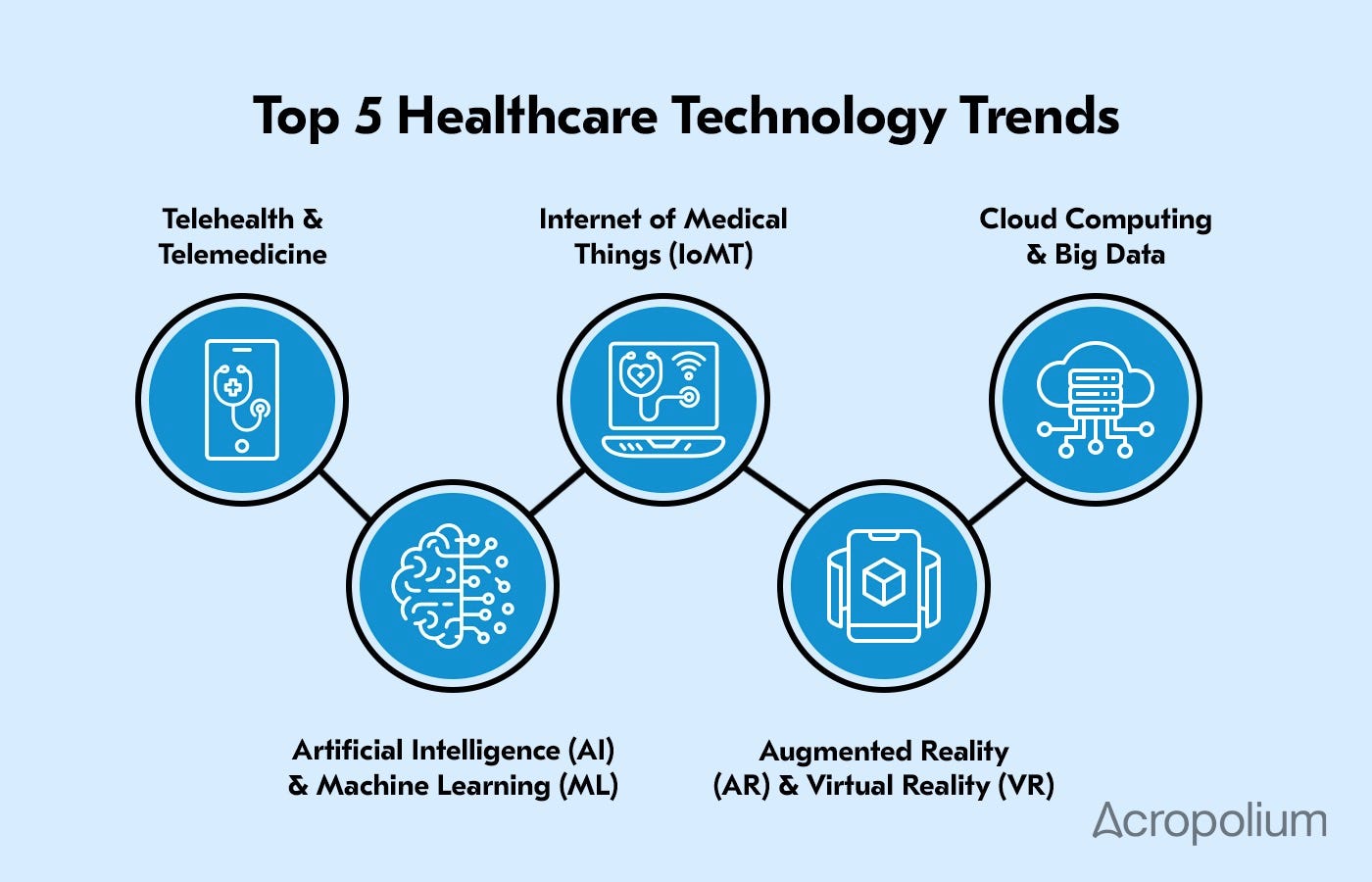General Healthcare Technology Trends
General Healthcare Technology Trends
Post a brief description of general healthcare technology trends, particularly related to data/information you have observed in use in your healthcare organization or nursing practice. Describe any potential challenges or risks that may be inherent in the technologies associated with these trends you described.
Then, describe at least one potential benefit and one potential risk associated with data safety, legislation, and patient care for the technologies you described. Next, explain which healthcare technology trends you believe are most promising for impacting healthcare technology in nursing practice and explain why.
Describe whether this promise will contribute to improvements in patient care outcomes, efficiencies, or data management. Be specific and provide examples.
Healthcare Technology Trends in Nursing Practice
Technology has become integral to nursing practice and patient care. Various trends have emerged, particularly concerning data management and information sharing, which enhance the quality of care provided to patients. This paper discusses these trends, their associated challenges and risks, potential benefits and risks related to data safety and legislation, and promising technologies that can impact nursing practice.
Healthcare Technology Trends
One significant trend in healthcare technology is the widespread adoption of Electronic Health Records (EHRs). EHRs streamline the documentation process, allowing for easy access to patient information. This trend promotes continuity of care as it enables healthcare providers to share patient data efficiently. Additionally, the rise of telehealth services has transformed how patients access healthcare. Telehealth allows patients to consult healthcare professionals remotely, increasing accessibility and convenience. Moreover, wearable health technology, such as fitness trackers and smartwatches, empowers patients to monitor their health metrics, promoting self-management of chronic conditions.
Despite the benefits, several challenges and risks are associated with these technologies. For instance, EHRs may lead to data breaches if proper cybersecurity measures are not in place. The transition to digital records also requires healthcare professionals to adapt to new systems, which can be met with resistance or frustration. Similarly, telehealth platforms may not be universally accessible, particularly in rural or underserved areas, which could exacerbate healthcare disparities.
Potential Benefits and Risks
One potential benefit of EHRs is the improvement in care coordination. Healthcare providers can access a patient’s comprehensive medical history, leading to informed decision-making and reduced duplication of tests. Conversely, a significant risk associated with EHRs is data security. Cybersecurity threats can lead to unauthorized access to sensitive patient information, which may harm patients’ trust and violate privacy laws.
Telehealth offers the benefit of increased accessibility to healthcare services, particularly for patients with mobility issues or those living in remote areas. However, it also poses risks, such as the potential for miscommunication due to the lack of face-to-face interaction, which may hinder accurate assessments and diagnoses. Furthermore, legislative barriers may limit the ability of healthcare providers to offer telehealth services across state lines, impacting patient access to necessary care.
Promising Healthcare Technology Trends
Among the various trends, telehealth and EHRs stand out as the most promising for impacting healthcare technology in nursing practice. The ability to conduct remote consultations not only improves accessibility but also allows nurses to provide timely interventions and follow-ups. This trend is particularly beneficial in managing chronic diseases, as it encourages continuous patient engagement.
Additionally, advancements in EHR technology, including interoperability, enable different healthcare systems to communicate effectively. This interoperability can lead to enhanced patient care outcomes as nurses and healthcare providers can make more informed decisions based on comprehensive patient data. For example, a nurse can quickly access a patient’s medication history and allergies before administering care, reducing the risk of adverse drug events.
Conclusion
Healthcare technology trends, particularly the adoption of Electronic Health Records and telehealth services, are transforming nursing practice. While there are challenges and risks associated with these technologies, their potential benefits, such as improved patient care coordination and increased accessibility, cannot be overlooked. By embracing these trends, nursing practice can evolve to enhance patient care outcomes, streamline efficiencies, and improve data management.
References
Hsiao, C. J., & Hing, E. (2014). Use and characteristics of electronic health record systems among office-based physician practices: United States, 2001-2013. National Center for Health Statistics. https://www.cdc.gov/nchs/data/nhsr/nhsr077.pdf
Caffrey, N. J., & McCarty, C. (2020). The impact of telehealth on healthcare access and patient outcomes: A review of the literature. Journal of Telemedicine and Telecare, 26(4), 239-247. https://journals.sagepub.com/doi/abs/10.1177/1357633X19844551
Rho, M. J., & Lee, S. Y. (2019). Health technology adoption among nurses: An integrative review. Nursing Open, 6(1), 1-10. https://onlinelibrary.wiley.com/doi/full/10.1002/nop2.299



